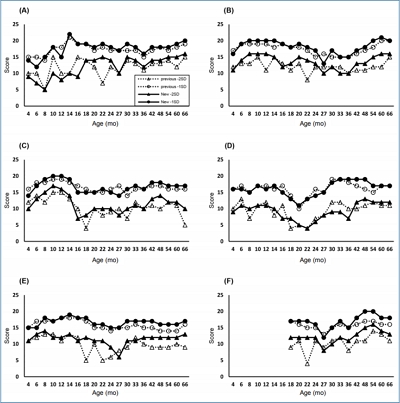- Original Article
- Developmental and Behavioral Medicine
- Development of the Korean Developmental Screening Test for Infants and Children (K-DST)
-
Hee Jung Chung, Donghwa Yang, Gun-Ha Kim, Sung Koo Kim, Seoung Woo Kim, Young Key Kim, Young Ah Kim, Joon Sik Kim, Jin Kyung Kim, Cheongtag Kim, In-Kyung Sung, Son Moon Shin, Kyung Ja Oh, Hee-Jeong Yoo, Hee Joon Yu, Seoung-Joon Lim, Jeehun Lee, Hae-Ik Jeong, Jieun Choi, Jeong-Yi Kwon, Baik-Lin Eun
-
Clin Exp Pediatr. 2020;63(11):438-446. Published online May 14, 2020
-

|
Question: Can the Korean Developmental Screening Test for Infants and Children (K-DST) be a useful screening tool for infants and children in Korea?
Finding: The K-DST has high reliability (internal consistency of 0.73–0.93, test-retest reliability of 0.77–0.88) and a high discriminatory ability with a sensitivity of 0.833 and specificity of 0.979.
Meaning: The K-DST is an effective and reliable screening tool for infants and children with neurodevelopmental disorders in Korea. |
-
-
- Review Article
- Neurology
- Malformations of cortical development: genetic mechanisms and diagnostic approach
-
Jeehun Lee
-
Clin Exp Pediatr. 2017;60(1):1-9. Published online January 31, 2017
-
|
|
Malformations of cortical development are rare congenital anomalies of the cerebral cortex, wherein patients present with intractable epilepsy and various degrees of developmental delay. Cases show a spectrum of anomalous cortical formations with diverse anatomic and morphological abnormalities, a variety of genetic causes, and different clinical presentations. Brain magnetic resonance imaging has been of great help in determining the exact... |
-
-
- Original Article
- Clinical outcome of acute necrotizing encephalopathy in related to involving the brain stem of single institution in Korea
-
Cha Gon Lee, Ji Hye Kim, Munhyang Lee, Jeehun Lee
-
Clin Exp Pediatr. 2014;57(6):264-270. Published online June 30, 2014
-
|
|
Purpose Acute necrotizing encephalopathy (ANE) is a fulminant disease of the brain characterized by bilateral thalamic lesions, and is prevalent among children in East Asia. The prognosis of ANE is usually poor with a high mortality rate and neurological sequelae. This study aimed to delineate the clinical characteristics and prognostic factors of ANE. MethodsWe retrospectively analyzed clinical data of 399 pediatric patients... |
-
-
- Clinical characteristics of congenital myotonic dystrophy diagnosed by molecular genetic method
-
Sook Hyun Nam, Young Bae Son, Bo Lyun Lee, Jeehun Lee, Chang-seok Ki, Munhyang Lee
-
Clin Exp Pediatr. 2007;50(9):868-874. Published online September 15, 2007
-
|
|
Purpose : We performed this study to investigate the perinatal and developmental features of the patients with congenital myotonic dystrophy (CDM) confirmed by the molecular genetic method and the clinical characteristics of their mother, and to identify the relation between the number of CTG repeats and the clinical severity.
Methods : A retrospective review of the medical records and the results... |
-
-
|













